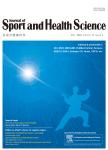Exploring overweight and obesity beyond body mass index:A body composition analysis in people with and without patellofemoral pain
作者机构:Department of PhysiotherapySchool of Science and TechnologySao Paulo State University(UNESP)Presidente Prudente 19060-900Brazil La Trobe Sport and Exercise Medicine Research CentreSchool of Allied HealthHuman Services and SportLa Trobe UniversityMelbourneVIC 3086Australia
出 版 物:《Journal of Sport and Health Science》 (运动与健康科学(英文))
年 卷 期:2023年第12卷第5期
页 面:630-638,F0003页
核心收录:
学科分类:0403[教育学-体育学] 1002[医学-临床医学] 1010[医学-医学技术(可授医学、理学学位)] 10[医学]
主 题:Body composition Body mass index Patellofemoral pain syndrome Skinfold thicknessTagedEnd
摘 要:Background:We compared body mass index(BMI),body fat,and skeletal muscle mass between(1) a mixed-sex nonathletic cohort of people with patellofemoral pain(PFP) and pain-free people,and(2) a nonathletic cohort of people with PFP and pain-free people subgrouped by sex(i.e.,men and women with PFP vs.pain-free men and women).Methods:This cross-sectional study included 114 people with PFP(71 women,43 men) and 54 pain-free controls(32 women,22 men).All participants attended a single testing session to assess body composition measures,which included BMI,percentage of body fat(%BFBioimpedance),and skeletal muscle mass(both assessed by bioelectrical impedance analysis),and percentage of body fat(%BFskinfoid)(assessed by skinfold caliper analysis).A one-way univariate analysis of covariance(age and physical activity levels as covariates) was used to compare body composition measures between groups(i.e.,PFP vs.pain-free group;women with PFP vs.pain-free women;men with PFP vs.pain-free men).Results:Women with PFP presented significantly higher BMI,%BFBiompedance,and %BFSkinfold,and lower skeletal muscle mass compared to pain-free women(p≤0.04;effect size:-0.47 to 0.85).Men with PFP and men and women combined had no differences in BMI,%BFBioimpedance,%BFSkinfold,and skeletal muscle mass compared to their respective pain-free groups(p 0.05).Conclusion:Our findings indicate that BMI and body composition measures should be considered as part of the evaluation and management of people with PFP,especially in women,who have demonstrated higher BMI and body fat and lower skeletal muscle mass compared to pain-free controls.Future studies should not assess body composition measures in a mixed-sex population without distinguishing men participants from women participants.



